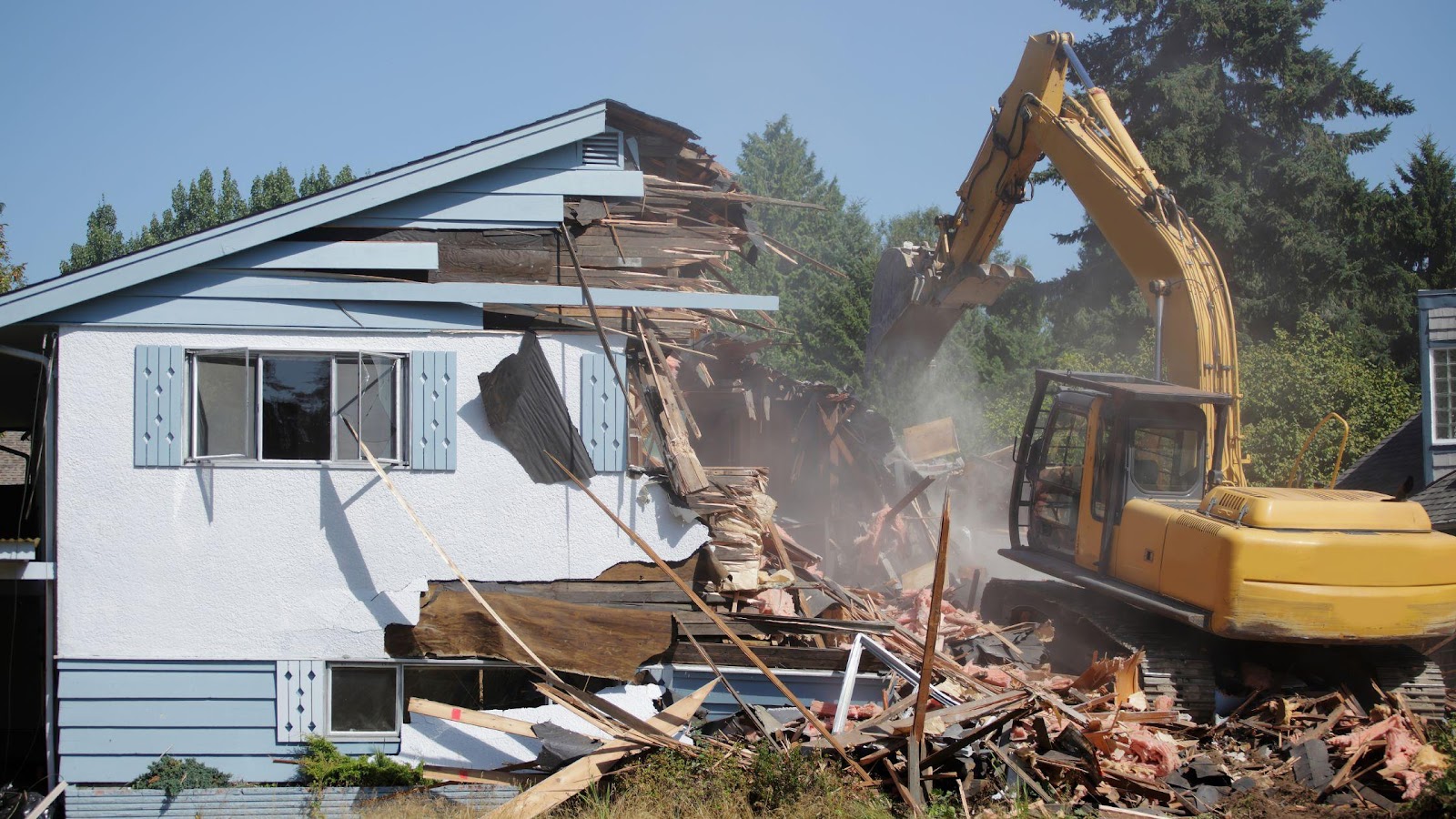
Recovering from a disaster is a daunting process, filled with tough decisions and emotional turmoil.
One of the most critical decisions homeowners face is whether to repair or demolish their home. Knowing when it’s time to demolish can save you time, money, and stress in the long run. Recognising the signs that your home is beyond repair is essential for making an informed and strategic decision.
If you’re grappling with the aftermath of a disaster and wondering what to do next, here are seven clear signs that it might be time to consider demolition.
1. Extensive Structural Damage
When your home suffers significant structural damage, it’s often more practical to start over. This includes major issues with the foundation, walls, or roof that compromise the house’s overall integrity. Repairs in such cases can be both impractical and unsafe, leading to ongoing problems and potential hazards.
Consulting with a structural engineer is crucial. They can provide a professional assessment and determine if the structure is salvageable. If the damage is extensive, demolition might be the most cost-effective and secure option.
2. Persistent Mould and Mildew
Mould and mildew are more than just cosmetic problems—they're serious health hazards. Prolonged exposure to moisture or flooding can allow mould to infiltrate deep into walls, floors, and ceilings. Extensive mould growth is incredibly difficult to eradicate completely, posing continuous health risks.
In severe cases where mould has compromised large areas, remediation efforts can be costly and ineffective. Demolishing the home ensures complete removal of mould, allowing you to rebuild in a safe and healthy environment.
3. Unsalvageable Electrical and Plumbing Systems
Disasters can severely damage your home's electrical and plumbing systems. Water damage, fire, or structural collapse can make these systems irreparable. Replacing extensive wiring, pipes, and fixtures can be exorbitantly expensive and still leave you with ongoing issues.
Unsafe electrical and plumbing systems pose significant hazards, including electrical fires and water contamination. Demolition allows you to install new, modern systems that meet current safety standards, providing peace of mind and reliability.
4. Environmental Hazards
Disasters can leave the land your home sits on contaminated or unstable. Issues like soil erosion, chemical spills, or landslides can render the ground unsafe for rebuilding. Living in or repairing a home in such conditions is risky and potentially dangerous.
An environmental assessment can determine if your property remains habitable. If significant hazards are present, demolishing the home and relocating might be the best course of action to ensure your family’s safety.
5. Excessive Repair Costs
When repair costs exceed your home’s value, demolition becomes the logical choice. Conduct a thorough cost analysis that includes all potential repair expenses—materials, labour, and temporary housing during repairs.
Sometimes, starting fresh is the most economical solution. For detailed steps on this process, refer to a comprehensive house demolition guide to ensure you're making informed decisions.
If rebuilding from scratch offers a better return on investment, it’s worth considering. Demolition can pave the way for a new, resilient structure that better fits your needs and budget.
6. Irreversible Aesthetic Damage
Some damage impacts the aesthetics of your home beyond repair. Extensive damage to exterior and interior finishes can be challenging and costly to restore. When a disaster leaves your home unsightly and devalued, it affects both market value and quality of life.
Opting for demolition allows you to design a home that meets modern standards and personal preferences. This fresh start can boost your psychological well-being and create a more appealing living environment.
7. Health and Safety Concerns
Health and safety should always come first. If your home poses any risk to your family’s well-being, consider demolition. This includes unstable structures, toxic substances, and other hazardous conditions that repairs cannot fully mitigate.
Using hydro excavation during the demolition process can safely remove underground utilities and contaminants, minimising the risk of damage and ensuring a cleaner site.
Making the Tough Decision
Deciding to demolish your home after a disaster is never easy, but recognising these signs can help you make a more informed choice.
Through understanding when demolition is the best option, you can take proactive steps towards recovery. This decision can ultimately lead to a safer, more efficient, and aesthetically pleasing home.